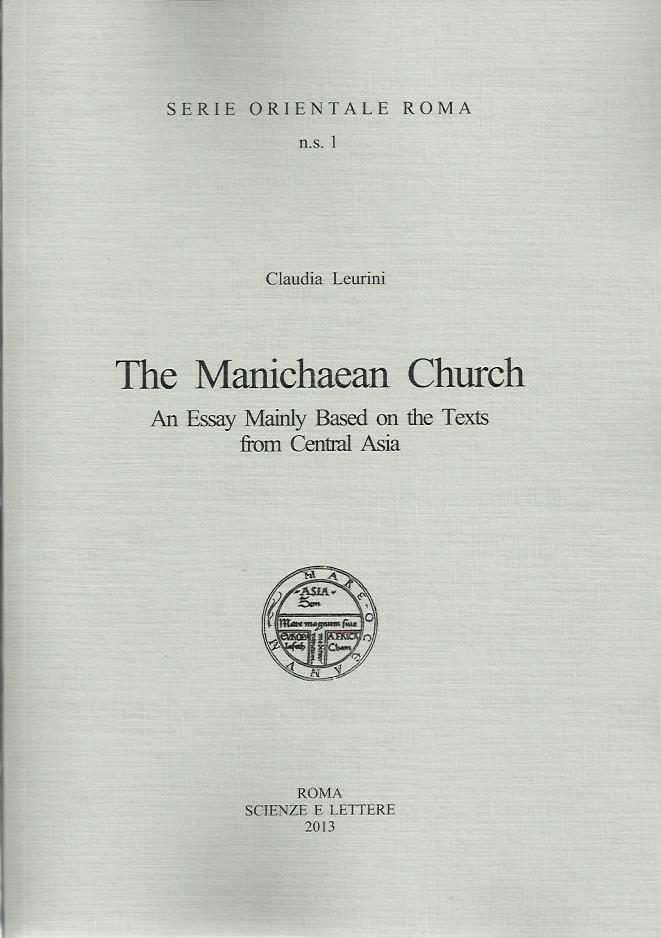The Manichaean Church An Essay Mainly Based on the Texts from Central Asia Serie Orientale Roma n.s. 1
- Anno: 2013
- Autore/i: Leurini Claudia
- Catalogo: Scienze e Lettere
- Argomento: Storia delle religioni
- Collana: Serie Orientale Roma
- ISBN: 9788866870395
- ISSN:
The Manichaean Church. An Essay Mainly Based on the Texts from Central Asia comes out of a complex and troubled editorial history. Exactly in the form we read it today, with the exception of the indexes, it was presented by the Author to the Scientific Committee of the Italian Institute for Africa and the Orient (IsIAO), and was accepted for publication in the Serie Orientale Roma (SOR) in 2009. The last two years of life of IsIAO were characterized by deep economic problems, mainly due to the decision by the Italian Government to reduce public support to the Institute below the subsistence level, condemning it to death. This caused a suspension of all scientific and editorial activities of IsIAO. That is why the publication of the work has been delayed for so long. The new ISMEO (re-established in Rome on 19 november 2012 as ISMEO – Associazione Internazionale di Studi sul Mediterraneo e l’Oriente), that claims a right to the cultural legacy of that prestigious Institute, sets itself in full scientific continuity with the tradition of the late IsIAO also by the publication of this volume, by which a new series continuing the Serie Orientale Roma is inaugurated. The present monograph by Claudia Leurini is the outcome of her activity during a three-years research fellowship she obtained at the University of Bologna, Dept. of the Cultural Heritage (formerly Dept. of Histories and Methods for the Preservation of the Cultural Heritage). During that period she also collaborated with the Turfanforschung at the Berlin-Brandenburgische Akademie der Wissenschaften in Berlin, where almost all analyzed materials are stored. This monograph thoroughly deals with the Manichaean Church, its structure, functions and characters, and through the analysis of texts mainly coming from Turfan and Central Asia it shows that Manichaeism was a universal religion that exploiting the legacy of other religious traditions (Zoroastrianism, Buddhism and, last but not least, Christianity) successfully produced a completely new system and paradigm for the interpretation of life, universe, death and ultimately the destiny of humanity. Under this respect this very accurate work actually offers new perspectives and stimulating clues. This monograph shall be placed in an international context of renovated attention to this subject. We are certain that The Manichaean Church fulfils the wish of Gherardo Gnoli, President of IsIAO (and previously of IsMEO),who, after supervising with great patience and generosity its elaboration, was given just the time to attend the suppression of the Institute he had directed for 32 years, but was not able to see the publication of a volume he deeply admired. (MARCO MANCINI, ADRIANO V. ROSSI)
TABLE OF CONTENTS
Foreword by Marco Mancini & Adriano V. Rossi
Acknowledgments by Claudia
I. Introduction
II. A ‘Bipolar’ Community
1. A Matter of Territoriality
2. The Elect a. Wiz?dag
b. D?nd?r
c. D?n?war and d?nawar
d. Ard?w
3. The Hearers
III. The Church as a Kingdom in the Manichaean Cosmology
1. A Christian Model for the Manichaean Hierarchy?
2. Cosmological Background for the Structure of the Manichaean
Church
3. The Paradise of the Father of Light
4. The Firmaments
a. The Twelve Kingdoms .
b. The Internal Structure of the Firmaments
c. The Manichaean Church inside the Firmament System
5. Conclusions
IV. The Hierarchy
1. The Head of the Church
2. The Teachers
3. The Bishops
4. The Householders and Presbyters
V. Women in the Eastern Manichaean Community
VI. Old Features and New Aspects in the Later Central Asiatic Manichaean
1. The Heads of the Hearers
2. The xwšt?nc
3. Famshi
4. The Monastery and the ruw?nag?n
5. The Investitures
VII. Literature
VIII. Indices
1. Index Verborum
a. Middle Persian
b. Parthian
c. Sogdian
d. Old Persian
e. Avestan
f. Old Turkish
g. Chinese
2. Index Nominum
3. Index Locorum
a. Avestan
b. Old Persian
c. Middle Iranian Manichaica
d. Middle Persian (inscriptions)
.
e. Pahlavi Texts
f. Old Turkish Manichaica
g. Chinese Texts
h. Coptic Texts
i. Latin Texts
j. Greek Texts
k. Bible - Gospels
l. Akkadian Texts
m. Palmyrene Inscriptions
n. Sanskrit Texts
.
o. Gnostic and Hermetic Texts
Addendum
F.to 17x24, Brossura, pp. 428



